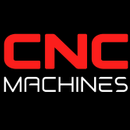Why Is the Lathe Called the Mother of All Machines?

Why Is the Lathe Called the Mother of All Machines?
If you’ve spent any time in a machine shop or manufacturing environment, you've likely heard the phrase: “The lathe is the mother of all machines.” But where does this title come from—and what makes the lathe so foundational in the world of machining?
In this article, we’ll explore why the lathe earned this legendary title, its historical significance, and how it laid the groundwork for modern manufacturing as we know it.
🌀 What Is a Lathe?
A lathe is a machine tool that rotates a workpiece around a central axis while cutting tools are applied to the material to shape, drill, bore, thread, or face it.
The core function of a lathe is turning, which produces cylindrical parts—everything from bolts to engine shafts.
🏛️ A Brief History of the Lathe
The lathe is one of the oldest known machine tools, dating back over 3,000 years to ancient Egypt. Originally powered by hand or foot (e.g., treadle lathes), the lathe evolved into a key driver of the Industrial Revolution.
Key Milestones:
- Ancient Egypt (~1300 BC): Early bow lathes for woodturning
- 1700s: Mechanized lathes powered by water and steam
- 1797: Henry Maudslay invents the screw-cutting lathe, revolutionizing precision engineering
- 1800s–1900s: Mass production of interchangeable parts using lathes
🛠️ Why Is the Lathe Called the "Mother of All Machines"?
The title comes from the lathe's foundational role in manufacturing:
1. The Lathe Makes Other Machines
The lathe was historically used to machine the screws, spindles, and gears needed to build other machine tools like:
- Milling machines
- Drills
- Shapers
- Grinders
Without lathes, early machinists couldn’t create the precision components necessary to build and replicate other tools.
2. Birthplace of Precision Engineering
When Henry Maudslay introduced the screw-cutting lathe, it enabled accurate thread production—leading to interchangeable parts for the first time in history. This innovation sparked:
- Standardized manufacturing
- Mass production
- Modern assembly lines
3. Versatility Across Industries
Lathes are used in nearly every industrial sector:
- Aerospace: Jet engine shafts, bushings, and flanges
- Automotive: Brake drums, pistons, and axles
- Medical: Surgical instruments and implant components
- Oil & Gas: Valves, connectors, and pipe threads
No matter the industry, chances are a lathe played a part in shaping critical components.
4. Education and Training
Even today, the lathe is often the first machine tool students learn to operate in technical schools and apprenticeships. Why? Because it teaches:
- Tool control
- Material behavior
- Precision measurement
- Foundational machining skills
🔄 Modern CNC Lathes: Evolution of a Classic
The traditional manual lathe has now evolved into the CNC lathe (Computer Numerical Control)—a fully programmable, automated machine capable of:
- Turning, drilling, threading, and tapping
- Working with metal, plastics, and composites
- Producing complex, multi-axis parts with sub-micron precision
Despite the digital transformation, the core principle remains the same: rotating a workpiece and removing material with precision.
🧠 Final Thoughts: The Machine That Started It All
The lathe is called the mother of all machines because it was the first tool capable of making precision parts, including the very machines that came after it. Its historical importance, engineering value, and continued use in modern shops make it a true cornerstone of manufacturing.
Whether you're machining a simple bushing or a complex aerospace shaft, you’re using principles that date back thousands of years—all thanks to the lathe.


